Templo del Cielo - Entradas, horarios, atracciones y consejos
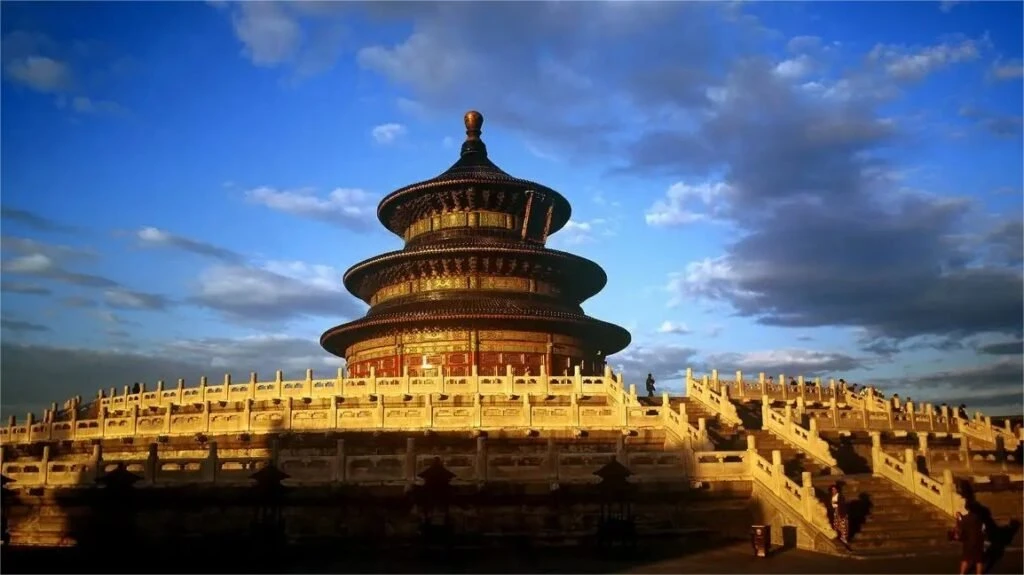

The Temple of Heaven (天坛), originally named the “Temple of Heaven and Earth,” served as a site for the emperors of the Ming and Qing Dynasties to conduct ceremonies for heaven worship, praying for good harvests and rain. It is the largest existing ancient sacrificial complex in China. Construction began in the 18th year of the Yongle Emperor’s reign (1420) during the Ming Dynasty, and it was renamed the Temple of Heaven in the 9th year of the Jiajing Emperor’s reign (1530). The temple complex is enclosed by two sets of walls, dividing it into an inner and an outer temple.
The main ancient buildings are located within the inner temple. An east-west wall divides the inner temple into northern and southern sections, with gates allowing passage between them. The inner temple comprises three main groups of buildings: the Circular Mound Altar, the Imperial Vault of Heaven, and the Hall of Prayer for Good Harvests. The Hall of Prayer for Good Harvests is situated in the northern part of the inner temple, the Circular Mound Altar in the southern part, and the Imperial Vault of Heaven in the western part. These sections are connected by the Danbi Bridge, which is 360 meters long, 28 meters wide, and 2.5 meters high. Surrounding the inner temple are several gates, including the East, North, West, Guangli, Zhaoheng, and Taiyuan Gates. The outer temple of the Temple of Heaven Park is a forested area with many trees. To the southwest of the outer temple is the Divine Music Office, where ceremonial music and dance were practiced, commonly known as the Daoist Temple of the Temple of Heaven.
The architecture of the Temple of Heaven is rich with traditional Chinese cultural symbolism. Key buildings like the Circular Mound Altar, the Hall of Prayer for Good Harvests, and the Imperial Vault of Heaven are circular, while the surrounding walls of the Hall of Prayer for Good Harvests and the Circular Mound Altar are square, symbolizing the ancient Chinese belief in a round heaven and a square earth. The two sets of temple walls are also round in the north and square in the south, further embodying this cosmological concept. The architectural design incorporates odd numbers, such as nine, which were considered heavenly numbers. The roofs of the main buildings are covered with blue glazed tiles to symbolize the sky, enhancing the sacred and majestic atmosphere of the rituals performed there.
Índice
- Información básica
- Ubicación y transporte
- Highlights of Temple of Heaven
- Vlog about Temple of Heaven
- Consejos útiles resumidos a partir de reseñas
- Interesting Facts about Temple of Heaven
- Attractions near Temple of Heaven
- Other Imperial Places in Beijing
- Other Sacrificial Sites in Beijing
Información básica
| Página web | http://www.tiantanpark.com |
| Duración estimada del viaje | about 3 hours |
| Precio del billete | Admission (the park): Adulto: 15 RMB (approx. 2 dollars from April 1st to October 31st) 10 RMB (approx. 1.5 dollars from November 1st to March 31st) Niños menores de 1,2 metros: gratis Attractions: The Hall of Prayer for Good Harvest (Qiniandian), Echo Wall, and Circular Mound Altar: 20 RMB throughout the year Combinted ticket (including the admission and all the attractions): Adulto: 34 RMB (approx. 5 dollars from April 1st to October 31st) 28 RMB (approx. 4 dollars from November 1st to March 31st) Niños menores de 1,2 metros: gratis |
| Horarios de apertura | The park 06.00 – 22.00 (April 1st – October 31st); Last entry: 21.00 06.30 – 22.00 (November 1st – March 31st); Last entry: 21.00 Atracciones 08.00 – 18.00 (April 1st – October 31st); Last entry: 17.30 08.00 – 17.00 (November 1st – March 31st); Last entry: 16.30 Attractions close on Mondays |
Ubicación y transporte
The Temple of Heaven is located to the south of the city center of Beijing, but not very far away. It has four gates, and all of them can be easily reached by bus, subway, and taxi.
To the east gate:
- Bust: Take No. 116, 128, 39, 41, 43, or 6, get off at the Fuahua Temple, and walk to the east gate.
- Subway: Take subway line 5 and get off at the East Gate of the Temple of the Heaven station (Tiantan Dongmen)
To the south gate:
- Bus: Take No. 336, 53, 62, 958, 122, or 141 and get off at the south gate stop (Tiantan Nanmen)
To the west gate:
- Bus: Take No. 120, 141, 20, 2, 36, or 53 and get off at the west gate stop (Tiantan Ximen)
- Subway: Take subway line 8, get off at Tianqiao station, and walk to the West gate.
To the north gate:
- Bus: Take No. 106, 110, 34, 35, 36 and get off at the north gate stop (Tiantan Beimen)
Highlights of Temple of Heaven
Prayer for Good Harvests Altar Complex (Qigu Altar)
Hall of Prayer for Good Harvests (Qiniandian)

The Hall of Prayer for Good Harvests (Qiniandian) is the most iconic structure within the Temple of Heaven complex. Built in 1420 during the 18th year of the Yongle Emperor’s reign, it was initially named the “Great Sacrificial Hall” and was rectangular, used for worshipping both heaven and earth. In 1545, during the Jiajing Emperor’s reign, it was redesigned into a three-tiered circular building. The original roof was covered with three colors of glazed tiles – blue, yellow, and green – symbolizing heaven, earth, and all living things. In 1751, during the reign of the Qianlong Emperor, these were replaced with uniform blue tiles and a gold top, and the hall was renamed the Hall of Prayer for Good Harvests. This hall is specifically used for the emperor’s prayers for good harvests during the first month of the lunar year.
The Hall of Prayer for Good Harvests stands at a height of 38.2 meters and has a diameter of 24.2 meters. The interior design is rich with symbolism, reflecting the ancient Chinese understanding of cosmology. The space inside is divided to represent the four seasons, twelve months, twelve traditional Chinese hours, and the twenty-eight constellations, embodying the ancient concept of a harmonious universe.
Qinian Gate

The Qinian Gate, situated to the south of the Hall of Prayer for Good Harvests, serves as the main gate to the Qigu Altar. Also constructed in 1420, it was initially known as the Great Sacrificial Gate and later renamed the Great Hall Gate. In 1751, under the decree of the Qianlong Emperor, it received its current name, Qinian Gate. This gate is designed in the traditional Chinese architectural style known as the “hip-and-gable roof” (Wudian roof) and has five bays. The central three bays serve as the gate itself, while the remaining two bays are decorative.
The central gate was reserved exclusively for the Heavenly Emperor, symbolically representing the highest authority, while the emperor entered through the left (eastern) gate, and officials used the right (western) gate. This strict arrangement underscores the hierarchical nature of ancient Chinese society and the ceremonial significance of the Temple of Heaven.
Huangqian Hall

The Huangqian Hall, constructed in 1420, is located outside the northern wall of the Qigu Altar. It served as a storage place for the divine tablets used in the sacrificial ceremonies. The hall is connected to the altar through three glazed gates and features a roof covered with blue glazed tiles, symbolizing the sky. The hall stands on a high platform with stone railings, and in front of it is a moon platform, accessible by stairs on the front and both sides, each consisting of eight steps.
Inside the courtyard of the Huangqian Hall is the Guxi Gate on the western side. The hall’s name plaque, written by the Jiajing Emperor of the Ming Dynasty, hangs under the eaves. The presence of this hall highlights the meticulous planning involved in the sacrificial rituals and the importance placed on the proper storage and handling of sacred objects.
Vault of Heaven Complex
Imperial Vault of Heaven (Huangqiongyu)

The Imperial Vault of Heaven was initially built in 1530 during the 9th year of the Jiajing Emperor’s reign in the Ming Dynasty. It was originally named the “Hall of Great Deities” (Taishendian) and served as the main hall of the Circular Mound Altar’s Celestial Warehouse, where the tablets used in the Heaven Worship ceremonies were stored. In 1538, it was renamed the Imperial Vault of Heaven. The current structure, reconstructed in 1752 during the 17th year of the Qianlong Emperor’s reign in the Qing Dynasty, is a double-eaved, circular building with a height of 19.5 meters and a diameter of 15.6 meters.
The Imperial Vault of Heaven is an architectural masterpiece made of wooden arches, showcasing meticulous and exquisite craftsmanship. The roof is covered with blue glazed tiles and topped with a golden sphere, symbolizing the heavens. Inside, the ceiling features intricate caisson designs with gold and green as the primary colors, centered around a large golden dragon motif, which exemplifies the zenith of ancient Chinese architectural decoration.
Echo Wall

The Echo Wall surrounds the Imperial Vault of Heaven. It is 3.72 meters high, 0.9 meters thick, with a diameter of 65.2 meters, and encloses an area of 3,336 square meters. The wall is built with tightly fitted bricks, and its top is adorned with blue glazed tiles. The curvature of the wall is precisely regular, and its smooth surface allows for unique acoustic effects.
When someone speaks or claps near the wall, their voice can travel along the curved surface and be heard clearly at the opposite end. This phenomenon is due to the wall’s ability to reflect sound waves efficiently, creating an intriguing auditory experience that fascinates visitors.
Three Echo Stone

In front of the Imperial Vault of Heaven lies a pathway, and the third stone slab on this path is known as the “Three Echo Stone.” Standing on this particular stone and clapping once produces three distinct echoes. This remarkable auditory effect is due to the precise placement of the stone at the center of the circular Echo Wall. The sound waves from a clap are reflected back by the eastern and western annex halls and the Echo Wall itself, all converging at the central point. The varying distances from these reflecting surfaces to the center create three separate echoes.
Circular Mound Altar Complex
Circular Mound Altar (Huanqiutan)

The Circular Mound Altar, built in 1530 during the ninth year of the Jiajing Emperor’s reign in the Ming Dynasty, is a three-tiered circular platform where the “Great Sacrifice to Heaven” ceremony was held annually on the winter solstice. Initially, the platform was made of blue-glazed bricks, symbolizing the heavens. In 1749, during the 14th year of the Qianlong Emperor’s reign in the Qing Dynasty, the altar was expanded and the blue-glazed bricks were replaced with white marble balustrades and a platform surface made of Ai Ye Qing stone.
The design of the Circular Mound Altar incorporates the number nine and its multiples, reflecting the ancient Chinese concept of “nine layers of heaven.” The steps leading up to the altar, as well as the stones and balustrades on each tier, are arranged in sets of nine or multiples thereof. This repeated use of the number nine emphasizes the supreme status of heaven in Chinese cosmology.
Heart of Heaven Stone (Tianxin Shi)

At the center of the top tier of the Circular Mound Altar is the Heart of Heaven Stone, a circular stone surrounded by nine concentric rings of stone slabs. The first ring consists of nine stones, the second of eighteen, and so on, increasing by nine stones per ring until the ninth ring, which has eighty-one stones. This arrangement symbolizes the “nine layers of heaven.”
Standing on the Heart of Heaven Stone and speaking produces a resonant and powerful sound. This acoustic phenomenon is due to the circular arrangement and the specific design of the altar, which amplifies the voice of the person standing at the center, symbolically placing them in direct communication with heaven.
Watch Lantern (Wangdeng)

Located to the southwest of the Circular Mound Altar, the Watch Lantern is a large cylindrical bamboo lantern measuring 2.15 meters in height and 1.4 meters in diameter. The lantern is mounted on a tall wooden pole, originally nine zhang (about 28.8 meters) in height, with a pulley system at the top for raising and lowering the lantern. The lantern pole is anchored by a stone base and supported by three large wooden braces, ensuring stability.
The Watch Lantern was used during the pre-dawn hours of the Great Sacrifice to Heaven ceremony to signify the solemn and sacred nature of the event. During the Ming and Qing dynasties, there were originally three such lanterns. However, in 1914, during a ceremony led by Yuan Shikai, two of the lantern poles were cut down, leaving only one remaining today.
Zhaigong Complex
Zhaigong

Built in 1420 during the 18th year of the Yongle Emperor’s reign in the Ming Dynasty, the Zhaigong covers nearly 40,000 square meters. It served as the emperor’s residence for ritual fasting, which included several strict abstentions: no meat, alcohol, music, sleeping in the inner chamber, discussing legal matters, or attending to illnesses and funerals. These practices ensured the emperor’s purity and sincerity before the ceremonies.
The Zhaigong’s layout is meticulously designed, with a dignified and serene environment. It is surrounded by double palace walls and two moats, providing a secluded and respectful atmosphere. The complex includes the No-Beam Hall, the Sleeping Hall, the Bronze Man Pavilion, the Bell Tower, and other structures for ceremonial, residential, and service purposes.
No-Beam Hall (Wuliangdian)

The No-Beam Hall, the main hall of the Zhaigong, was also built in 1420. It is named for its unique construction, which uses brick arches to support the structure instead of traditional beams. The hall hosted the emperor for various rituals upon entering and exiting the Zhaigong. Inside, the hall is restored to its original Qing Dynasty appearance, featuring a horizontal inscribed board with the words “Respect Heaven’s Mandate,” written by the Qianlong Emperor. The screen and throne inside are original pieces, adding to the hall’s historical value.
Bronze Man Pavilion (Tongrenting)

The Bronze Man Pavilion is a small, exquisite structure supported by four stone pillars and topped with a brick roof. It stands 5.5 meters tall and 2 meters wide. During the emperor’s fasting period, a bronze figure about 1.5 feet high was placed inside, holding a plaque inscribed with the words “Abstinence.” This served as a constant reminder for the emperor to maintain his ritual purity and focus.
Bell Tower (Zhonglou)

The Bell Tower was constructed in 1743 during the 8th year of the Qianlong Emperor’s reign. It features a double-eaved hip-and-gable roof, a common architectural style for important structures. Inside the tower hangs the Great Harmony Bell, a massive bell cast during the Yongle period. The bell is known for its pure and resonant sound. Before the Heaven Worship ceremonies, the bell was rung as the emperor departed the Zhaigong. The ringing continued until the emperor reached the sacrificial altar, symbolizing the commencement of the sacred rituals.
Shenyueshu Complex
Divine Music Administration (Shenyueshu)

The Divine Music Administration, established in 1420 during the 18th year of the Yongle Emperor’s reign in the Ming Dynasty, was originally known as the Divine Music Observatory (Shenleguan). This complex was recognized as the highest institution of ritual music in the Ming and Qing Dynasties. The initial complex was expansive and picturesque, with various halls and scenic spots including tea houses and pharmacies, earning it the alternate name “Temple of Heaven Taoist Monastery.” In 1743, during the 8th year of the Qianlong Emperor’s reign in the Qing Dynasty, it was renamed the Divine Music Office (Shenlesuo). By 1754, in the 19th year of Qianlong’s reign, it received its final name, the Divine Music Administration (Shenleshu). The complex includes significant structures such as the Ningxi Hall, the Xianyou Hall, the Zhaoyi Hall, the Muyi Hall, the Linglun Hall, and the Robe and Costume Storehouse.
Ningxi Hall

The Ningxi Hall is the main hall of the Divine Music Administration. Originally used for rehearsing and performing the sacrificial music of the Ming and Qing Dynasties, this ancient single-eaved, hip-and-gable roof building faces east and covers an area of 600 square meters. The hall has six bays and features passageways on both the east and west sides. Today, it serves as the Zhonghe Shaoyue (Harmonious Music of the Central Harmony) Exhibition Hall, showcasing performances of ancient sacrificial music and dances. It also displays a variety of traditional musical instruments such as bells and chimes, providing a vivid insight into the musical heritage of ancient China.
Xianyou Hall

Located to the west of Ningxi Hall, Xianyou Hall was originally dedicated to the Taoist deity Xuanwu Emperor. During the Ming Dynasty, the ritual music was primarily managed by Taoist priests. However, during the Qianlong era of the Qing Dynasty, the Taoist priests were expelled, and the Divine Music Observatory was restructured into the Divine Music Office, and later into the Divine Music Administration. The Xianyou Hall fell into disuse during this reorganization. Today, it has been repurposed as the Memorial Hall of Chinese Ancient Music Figures, celebrating the contributions of historical figures in the development of Chinese music.
Auxiliary Architectures
The Long Corridor

The Long Corridor, located to the east of the Hall of Prayer for Good Harvests (Qigu Altar), is a distinctive feature of the Temple of Heaven. Shaped like an “L,” this corridor connects the eastern brick gate of the Qigu Altar with the Divine Kitchen Courtyard and the Butcher Pavilion. During the Ming and Qing Dynasties, it served as the passage for transporting sacrificial offerings. Ancient rituals required that the slaughterhouse be situated 200 steps away from the altar to ensure the offerings remained uncontaminated by rain, snow, or dust. The Long Corridor, measuring 350 meters in length and 5 meters in width, consists of 72 connected rooms, earning it the nickname “Seventy-Two Connected Rooms.” It features windows on the front and solid walls on the back, with continuous eaves and a unified roof ridge.
The Danbi Bridge

The Danbi Bridge is another notable feature within the Temple of Heaven complex. Stretching 360 meters, it connects the Circular Mound Altar (Huanqiu Altar) and the Hall of Prayer for Good Harvests (Qigu Altar). Elevated 4 meters above the ground, this ancient viaduct is considered the oldest overpass in Beijing. The bridge is 30 meters wide, with a central stone path known as the “Sacred Way,” reserved exclusively for the deity. The eastern side, made of brick, is the “Imperial Way,” designated for the emperor, while the western side, known as the “Royal Way,” is for accompanying princes and ministers. The bridge’s design reflects the hierarchical nature of the ceremonies, with distinct paths reinforcing the social order.
The Danbi Bridge slopes from north to south, creating a sense of ascending towards the heavens as one walks northward. This gradual ascent adds to the spiritual experience, symbolizing the approach to the heavenly realm. The bridge’s centrality and elevation make it a focal point in the temple complex, highlighting its significance in the ritualistic journey.
Vlog about Temple of Heaven
Consejos útiles resumidos a partir de reseñas
Enjoy the Illumination: The Qiniandian (Hall of Prayer for Good Harvests) landscape lights up every Friday, Saturday, and major holidays in the evening. Many people gather to capture the beauty of the illuminated temple.
Arrive Before 4 PM: It’s advisable to arrive at the Qiniandian before 4:00 PM so that you can experience both the daytime and nighttime views. The illuminated Qiniandian after dark is truly stunning.
Purchase a Combined Ticket: Make sure to buy a combined ticket, as it’s required for entry into the Qiniandian, Huangqiongyu (Imperial Vault of Heaven), Circular Mound Altar, and Echo Wall.
Choose the Right Entrance: The subway stations near the East Gate and West Gate are more convenient than the one near the North Gate, which requires a longer walk. The South Gate is the main entrance, but it tends to have long queues and many tour groups. Consider using the East Gate to avoid the crowds.
Rent an Audio Guide: Spending 10 RMB to rent an audio guide is recommended as it enhances the experience by providing informative commentary while you explore.
Enjoy Wildlife: If entering from the South Gate and exiting from the Echo Wall, head north along the path towards the Zhaigong (Abstinence Palace). In the pine forest along this path, you’ll find many squirrels, especially in autumn when they come out to forage. You can bring some walnuts or pine nuts to feed the squirrels for a delightful experience.
Interesting Facts about Temple of Heaven
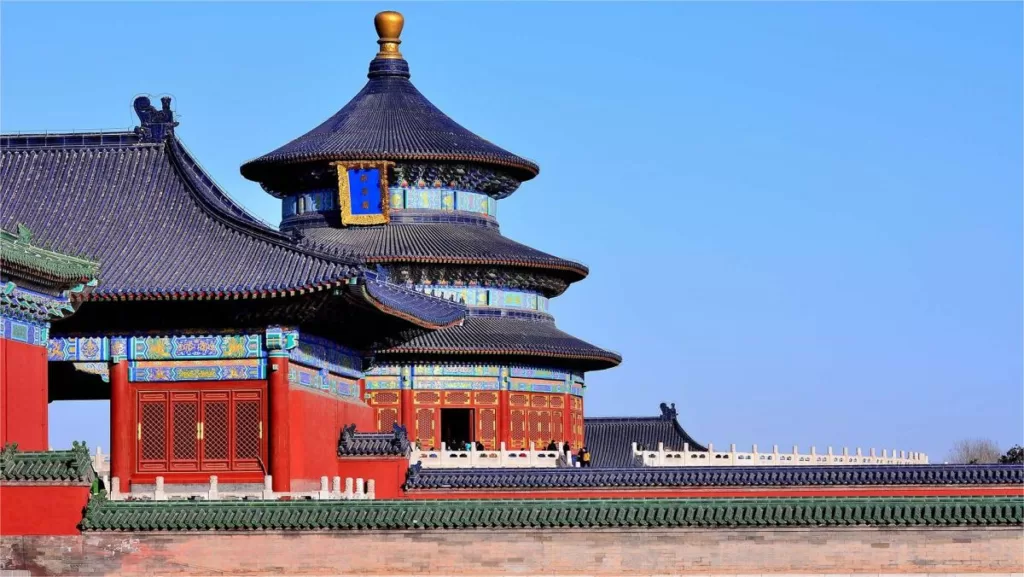
Who built the temple of heaven?
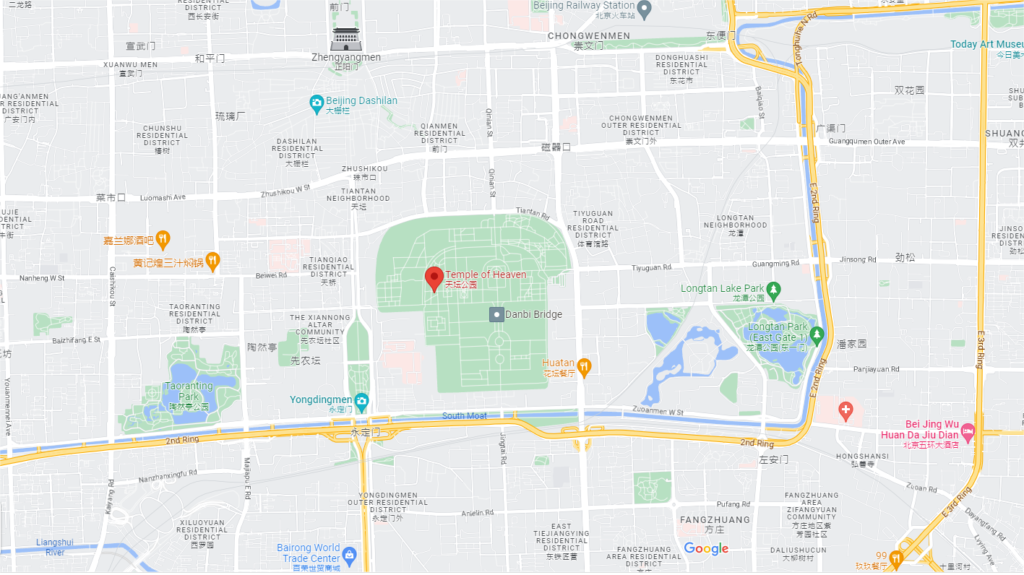
Where is Temple of Heaven located?
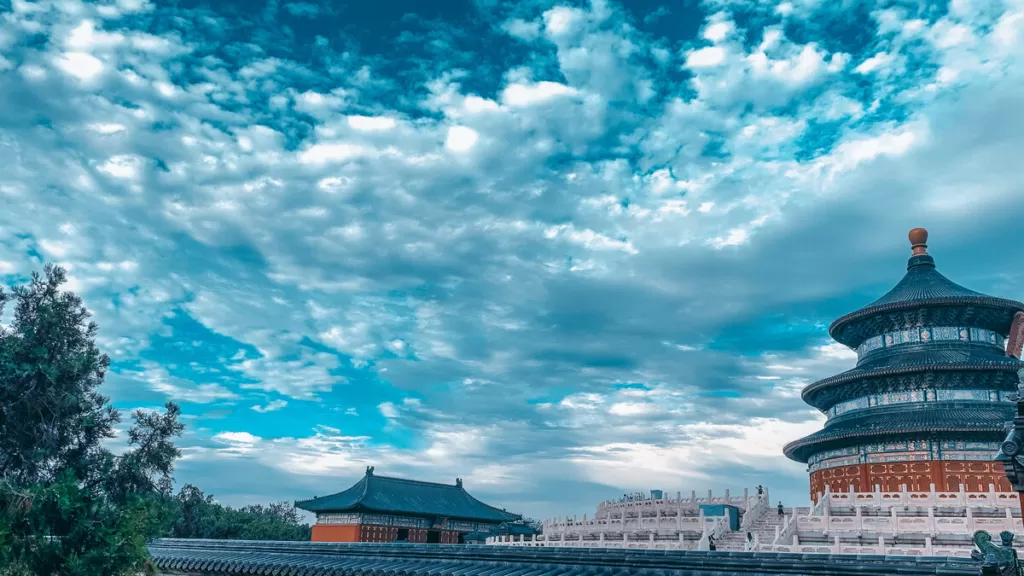
How old is temple of heaven?
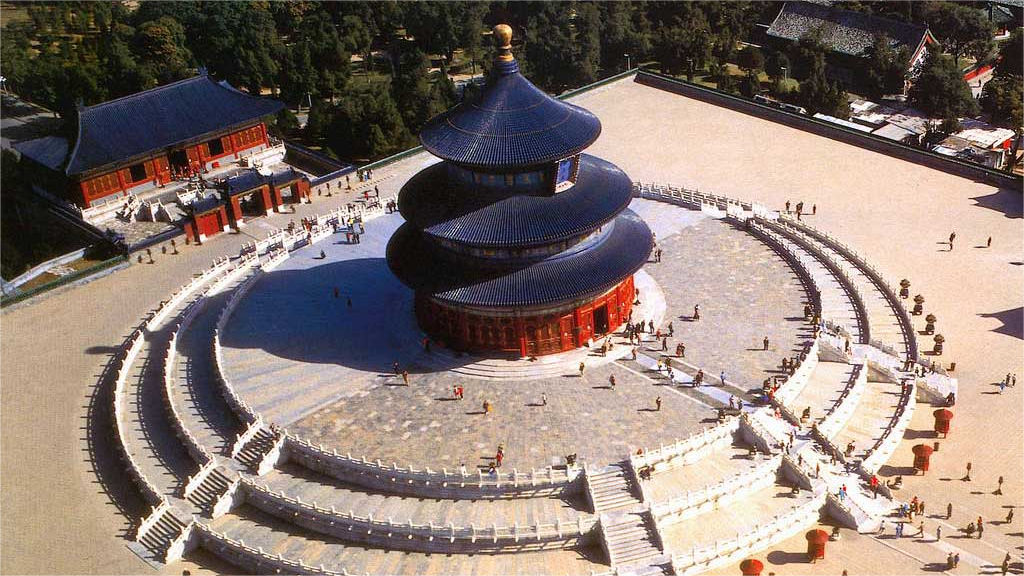
Why was the Temple of Heaven built
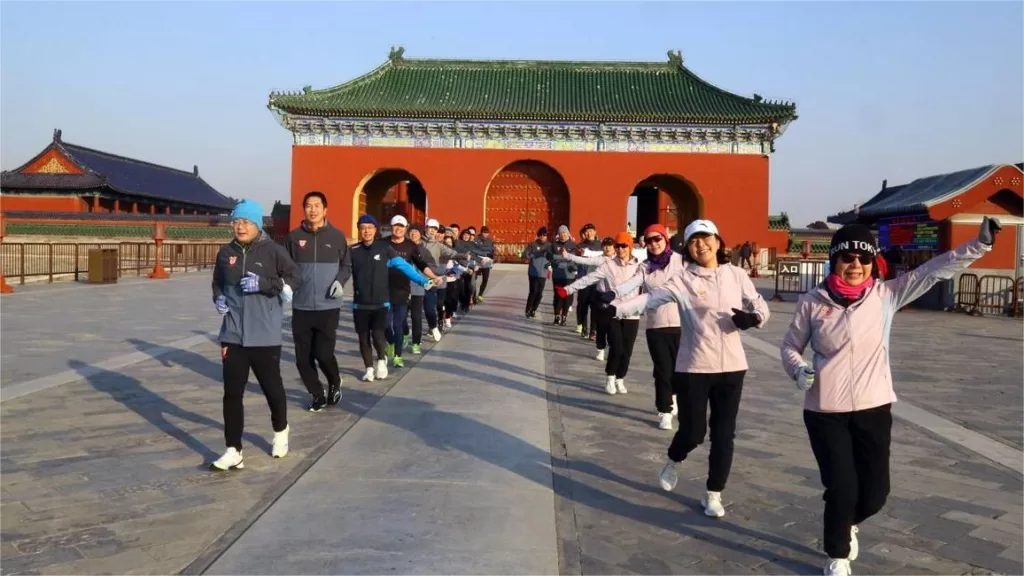
What is the temple of heaven used for today
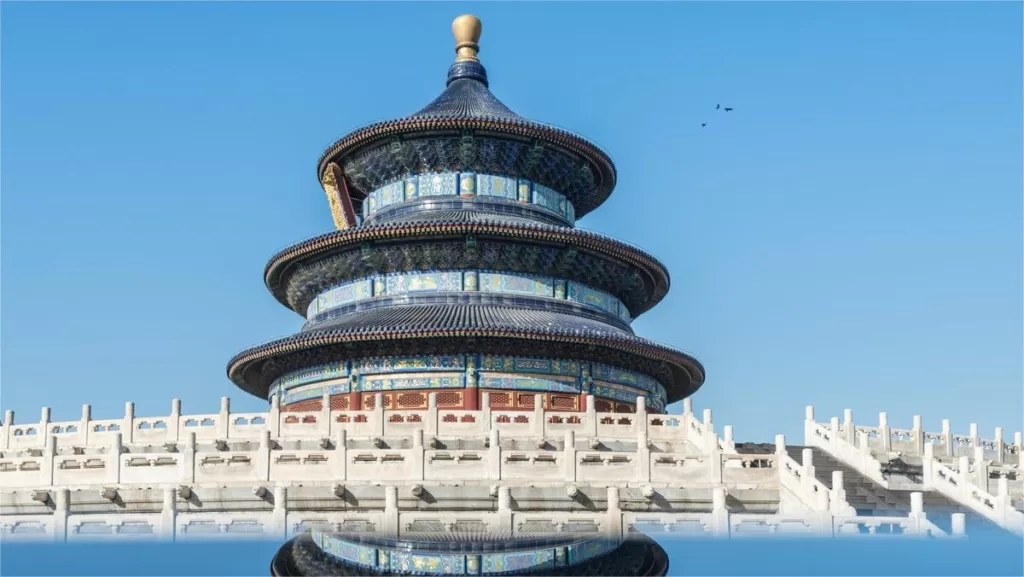
The architectural style of the Temple of Heaven
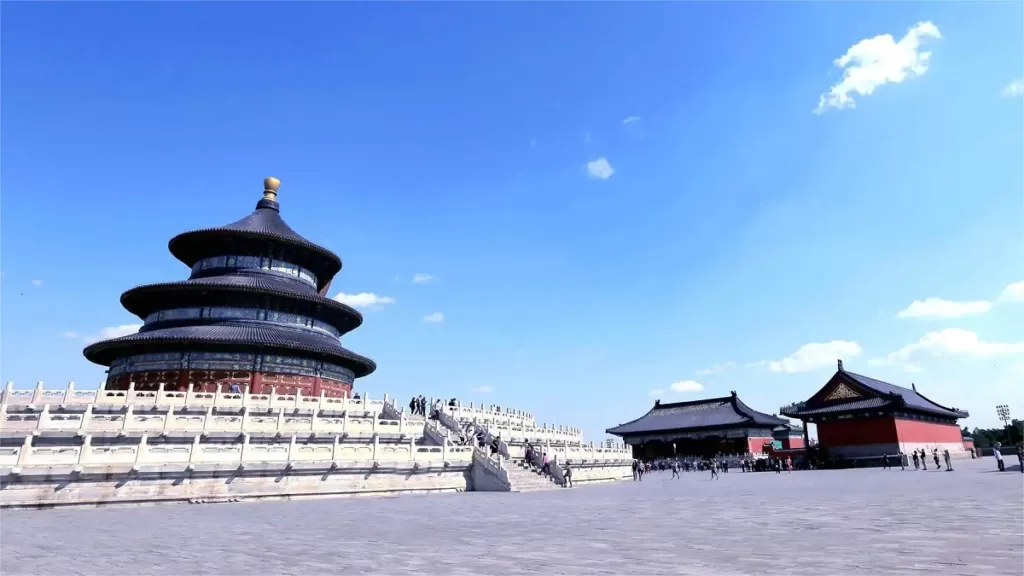
How was the Temple of Heaven built
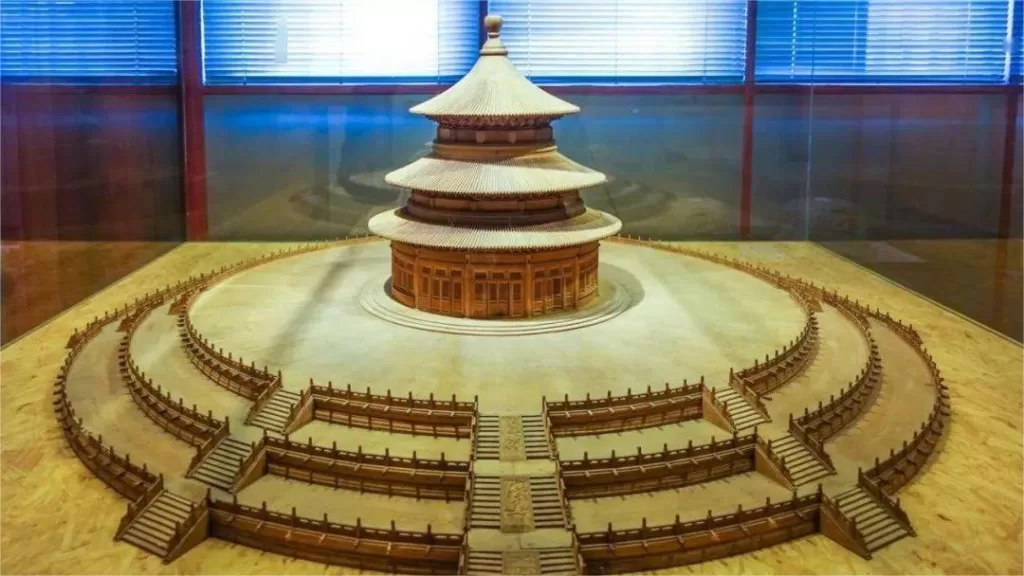
The structure symbolism in Temple of Heaven
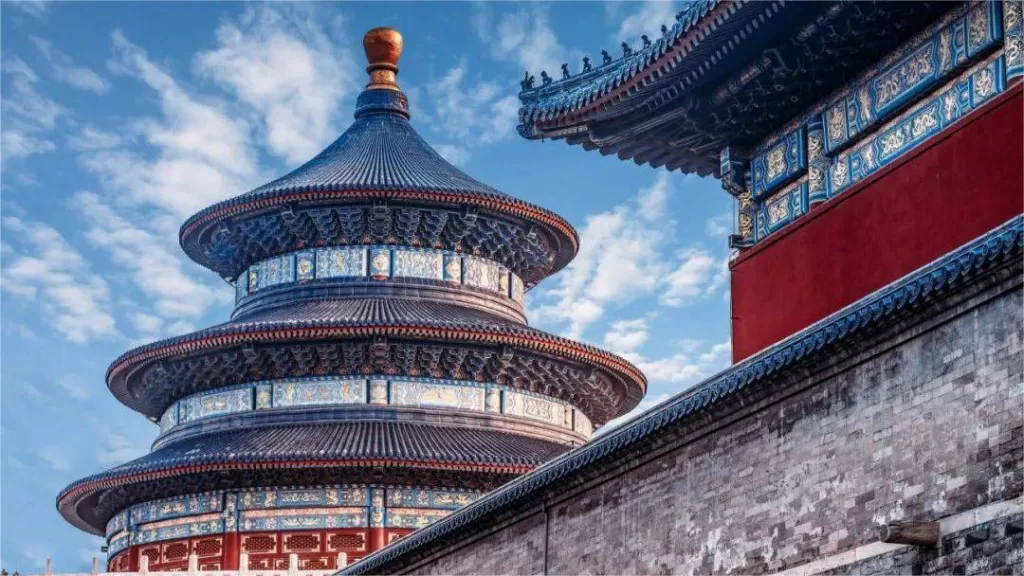
What is the purpose of praying at the Temple of Heaven
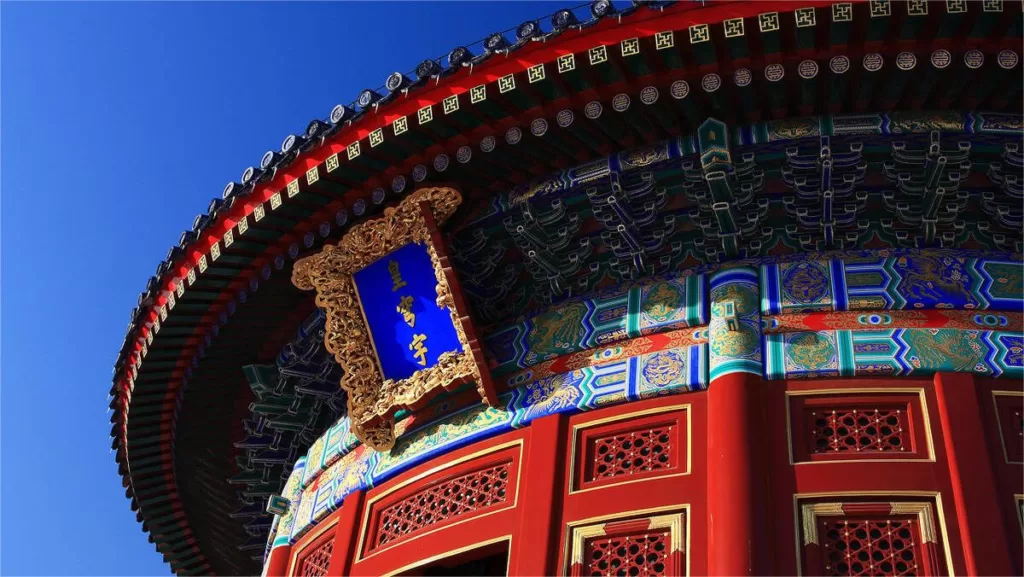
The differences between Temple of Heaven and Forbidden City

How did they do sacrificial in the Temple of Heaven
Attractions near Temple of Heaven
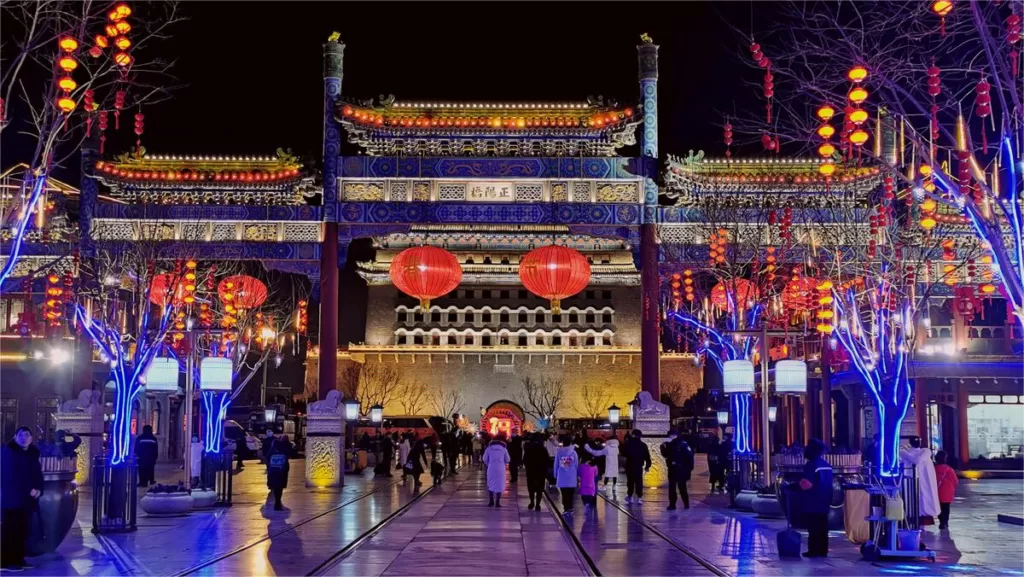
La calle Qianmen, una antigua zona comercial
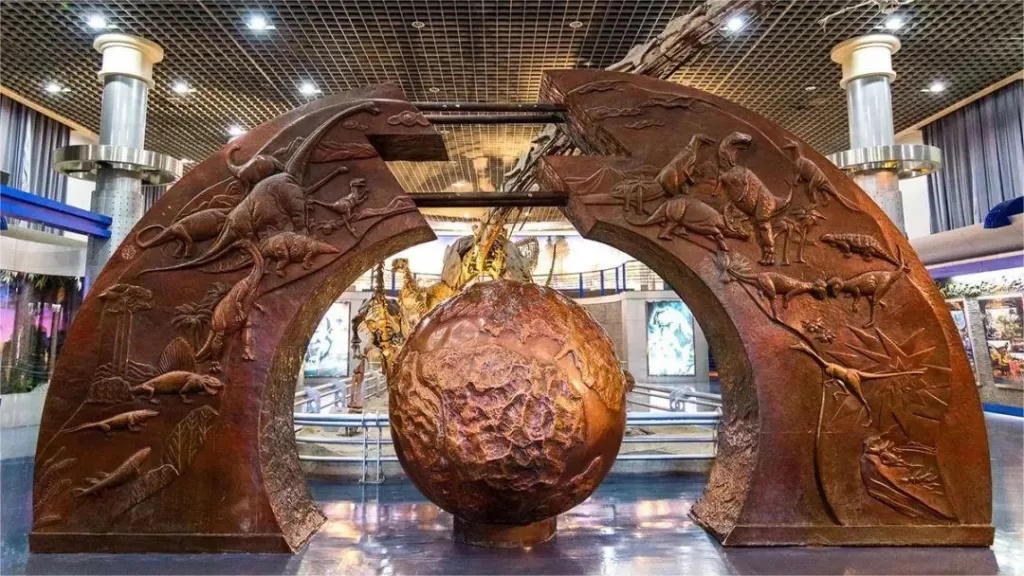
Museo de Historia Natural de Pekín: un viaje en el tiempo y el espacio

Hongqiao Pearl Markt – a vibrant shopping destiantion
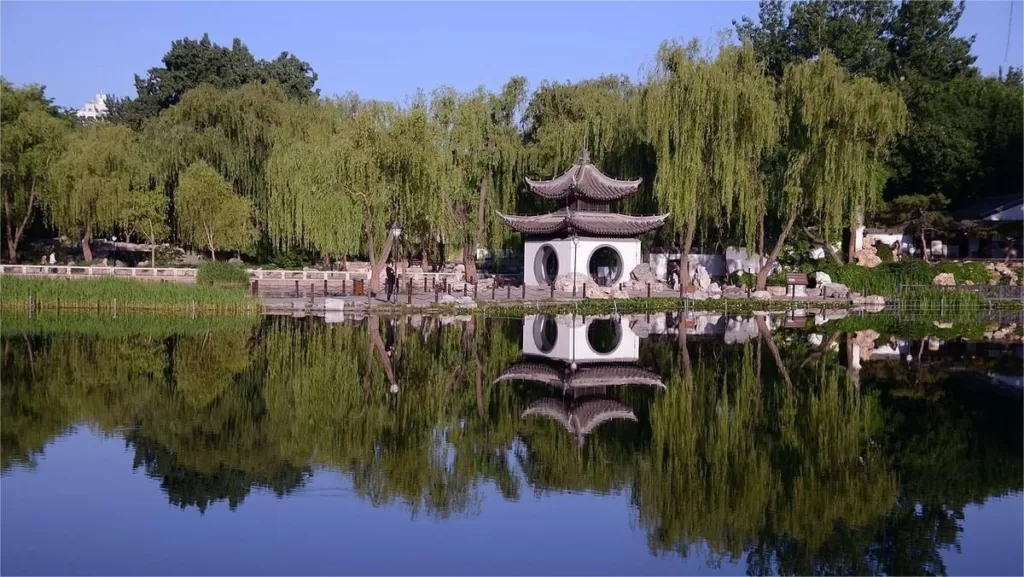
Parque Taoranting - pabellones y puentes históricos
Other Imperial Places in Beijing
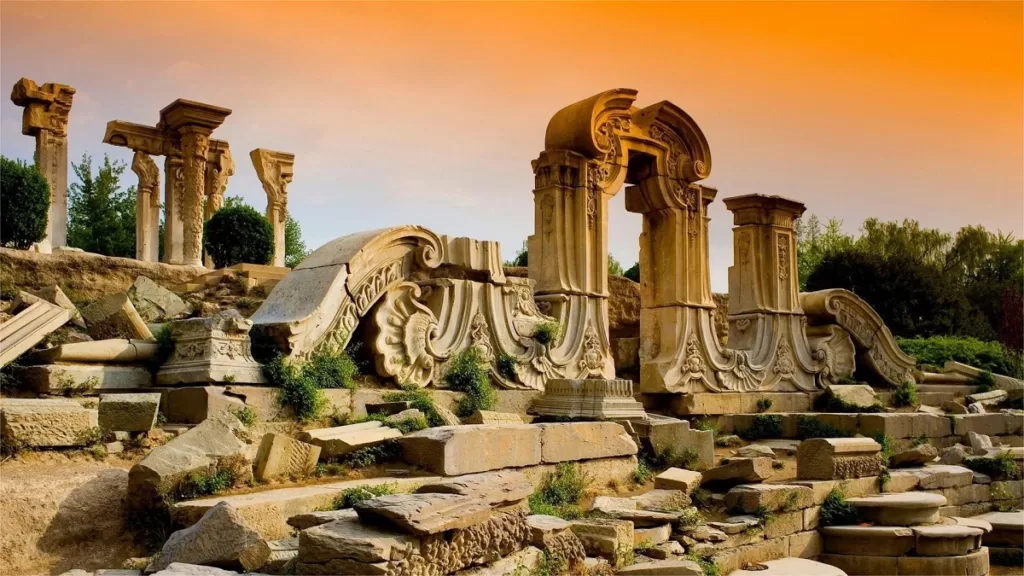
Yuanmingyuan – ruins of former palaces
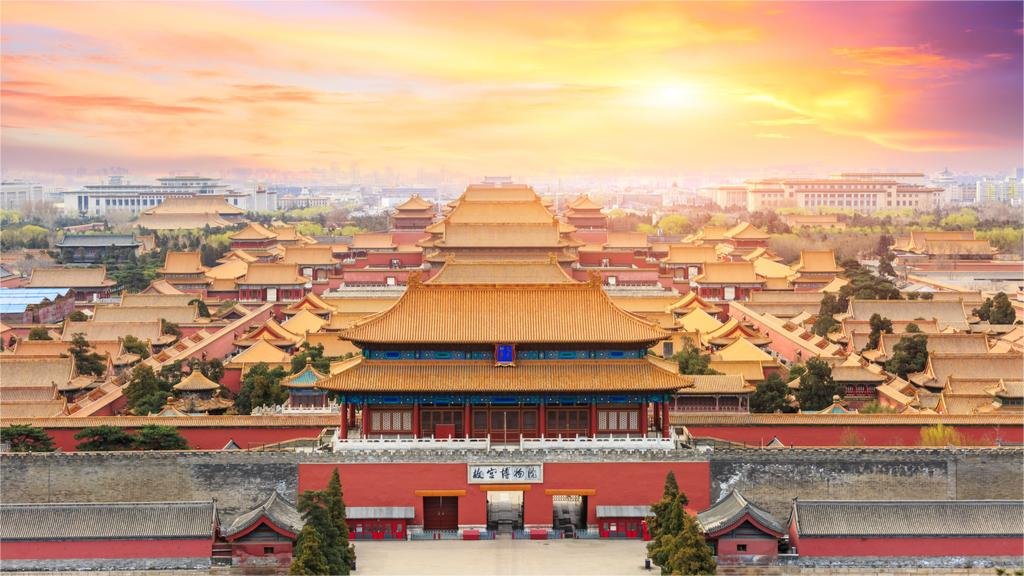
Forbidden City – former emperors’ residence

Summer Palace – the imperial resort
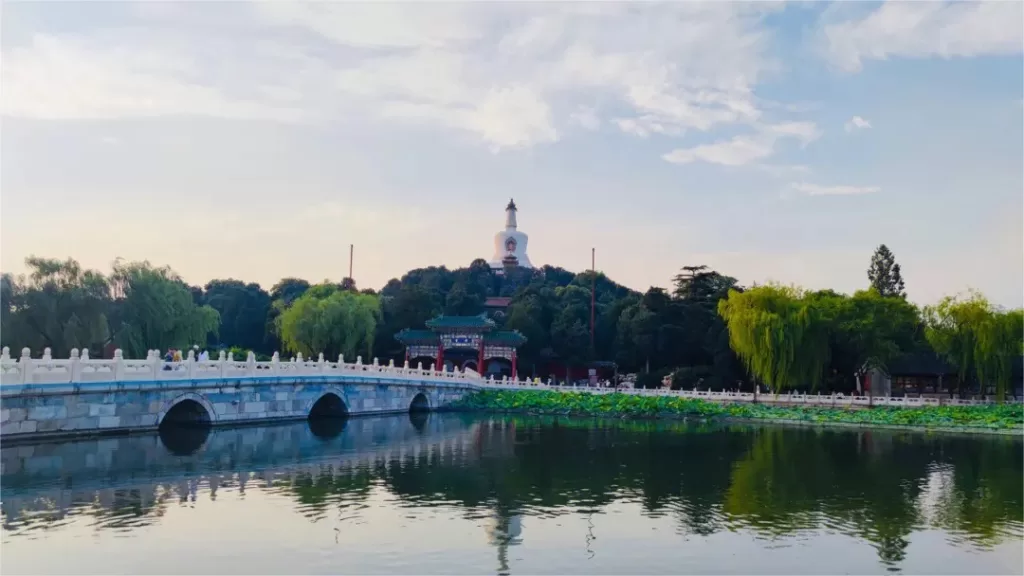
Beihai Park – one of the best preserved imperial parks
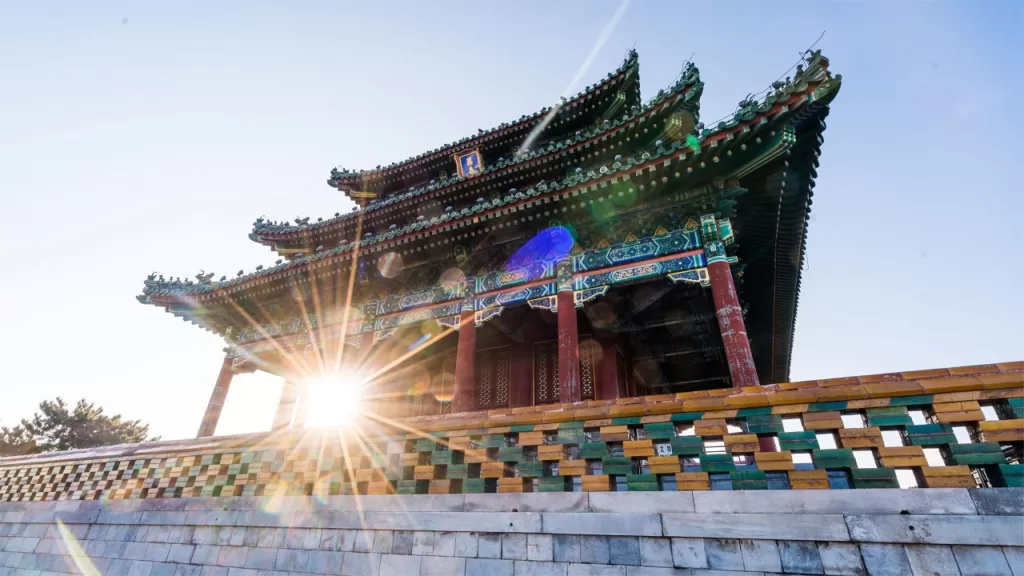
Jingshan Park – the best place to overlook the Forbidden City
Other Sacrificial Sites in Beijing
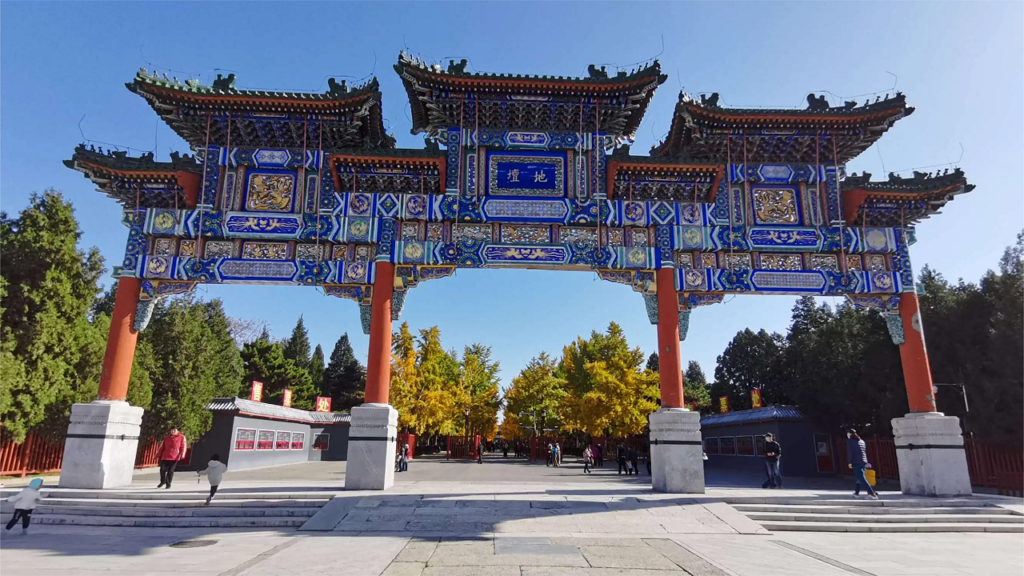
Templo de la Tierra

Temple of the sun
Sitio histórico de Pekín, Patrimonio mundial de la UNESCO